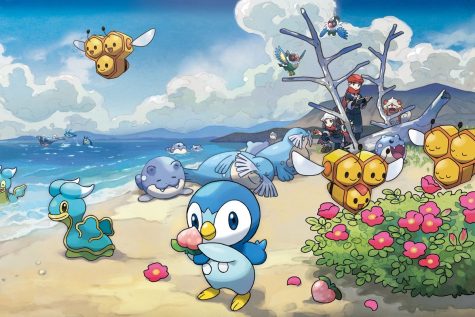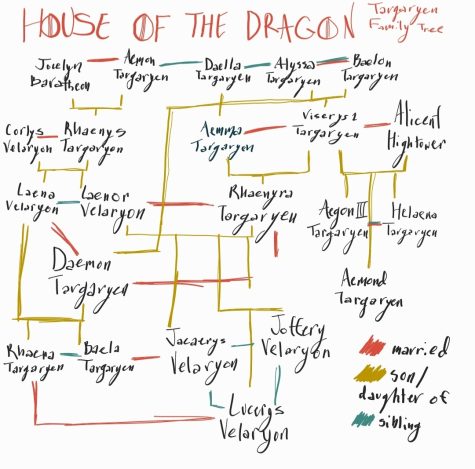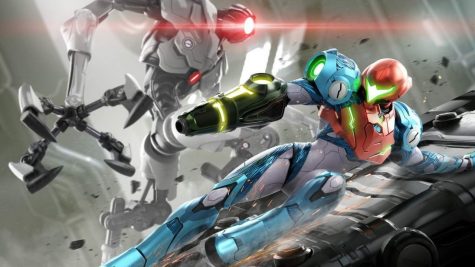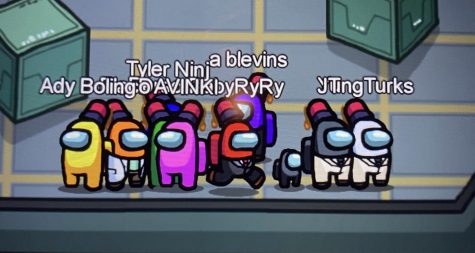Episode II: Attack of the Clones
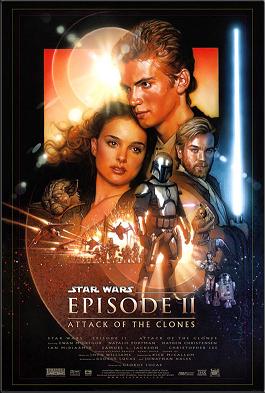
“The shroud of the Dark Side has fallen. Begun the Clone War has.”
Three years after the release of “The Phantom Menace,” Star Wars fans’ feelings toward George Lucas’ new prequel trilogy were in limbo. Despite grossing over a billion dollars worldwide, the film only garnered a mixed reception from both critics and audiences. Nevertheless, fans were optimistic of this new chapter, “Attack of the Clones.”
“Attack of the Clones” was released to theaters on May 16, 2002. It is set a decade after the events of “The Phantom Menace,” revolving around Padawan apprentice Anakin Skywalker. Anakin, now 19, has been training under his master Obi Wan Kenobi to become an official Jedi Knight. During that time, unrest overtook the galaxy, and several thousand solar systems seceded from the Galactic Republic under the command of the mysterious former Jedi Count Dooku. After Senator Padmé Amidala, the former queen of Naboo, is nearly assassinated on the planet of Coruscant by bounty hunter Zam Wesell, the Jedi Council orders Anakin to protect her and be her loyal bodyguard, while Obi Wan is assigned to track down Padmé’s suspect. Anakin is in love with Padmé, but as Obi Wan advises to him, attachment can lead one down the path of the Dark Side. Obi Wan begins to investigate the mystery surrounding the separatist solar systems, and he discovers that the Republic has requested for an army of bioengineered Clone troopers, with the genetic host being a bounty hunter named Jango Fett who lives on the oceanic planet Kamino. To Obi Wan’s surprise, Fett assisted Zam in Padmé’s assassination attempt, and the two engage in a battle above Kamino’s sea. Faking his own death, Obi Wan follows Fett and his young son Boba to the desert planet Geonosis, where Obi Wan discovers Dooku and his separatist allies, one of them being former Trade Federation viceroy Nute Gunray. Dooku was also chiefly responsible for Padmé’s assassination attempts, and he is additionally overseeing the construction of a deadly separatist droid army. Dooku eventually imprisons Obi Wan, who reveals that he is working for the Sith Lord Darth Sidious. Dooku persuades Obi Wan to join Sidious, but he declines, and he is subjected to execution.
Concurrently taking place alongside Obi Wan’s story, Anakin and Padmé begin to develop a romantic attraction between each other. As expected, Anakin comes off strong to Padmé, and while she is clearly interested in him, she is unwilling to love him because of her political duties and is in self-denial about her feelings towards him. Despite his growing love for Padmé, Anakin worries about the fate of his mother Shmi much more. After having a nightmare about her one night, Anakin and Padmé decide to travel to his home planet Tatooine, accompanied by R2-D2. Anakin learns from his former master Watto that Shmi and his protocol droid C-3PO were bought by moisture farmer Cliegg Lars, who Shmi later married. At the Lars homestead, Anakin and Padmé meet Cliegg, his son Owen, Owen’s girlfriend Beru, and C-3PO. Cliegg tells Anakin that Shmi was kidnapped by a tribe of Tusken Raiders, violent sand people settled in the deserts of Tatooine. Advising Padmé to stay at the homestead, Anakin rushes to a Tusken Raider camp, where he finds Shmi brutally beaten to a pulp. Shmi, elated to see Anakin again, dies in his arms from her injuries. Enraged in disbelief and sadness, Anakin slaughters all the Tusken Raiders with his lightsaber. Back at the homestead, Anakin angrily tells Padmé that he is ashamed of killing the Tusken Raider tribe, and breaks down in tears.
Anakin later receives a holographic message from Obi Wan, who tells him to alert the Jedi Council about Dooku. Anakin, Padmé, R2-D2, and C-3PO all journey to Geonosis. There, the two droids get themselves into trouble in the separatist droid factory, and Anakin and Padmé are captured by Jango Fett, scheduled to be executed by monstrous alien creatures alongside Obi Wan. Minutes before the execution ceremony, Padmé finally confesses her uncontrollable love for Anakin, and they share a kiss. After disrupting the execution and killing the creatures, a battalion of Clone troopers and Jedi arrive to fight Dooku’s separatist forces, led by supreme Jedi Knights Mace Windu and Yoda. Windu decapitates Fett, and Dooku’s army is defeated. Obi Wan and Anakin are led to Dooku and battle him, with the latter losing his right arm in the process. Yoda unexpectedly arrives to the battle, but is unable to defeat Dooku when he escapes to Darth Sidious’ secret hideout, where he delivers plans of a lethal superweapon capable of destroying entire planets. Although the Jedi were victorious in the battle on Geonosis, Dooku is still alive, and Yoda foresees that the galaxy will very soon witness the beginning of the Clone Wars. Anakin receives a new bionic arm, and he and Padmé secretly marry in the presence of R2-D2 and C-3PO, unbeknownst to Obi Wan.
Compared to its predecessor “The Phantom Menace,” the plot of “Attack of the Clones” is significantly more engaging and exciting, even if it may suffer from inconsistent and unbalanced pacing at certain times. The biggest strengths of the film are Shmi’s death scene, the love story between Anakin and Padmé, and Darth Sidious’ evil scheme. The short but poignant reunion between Anakin and his mother evokes both melancholy and happiness from the viewers, who are relieved that Anakin and Shmi get to see each other again after ten years, but simultaneously saddened that Anakin was unable to prevent her misfortune due to his extensive Jedi training. When Shmi dies, no words are spoken, yet Anakin’s facial expressions and John Williams’ music convey his feelings about what he has just experienced, along with his feelings about what he is experiencing inside of him. Considering Anakin’s transformative character arc across the first six films of the Star Wars saga, it is a pivotal scene in setting up the character that he is going to be, along with the fate that he will suffer in the future.
The love story between Anakin and Padmé also feels very genuine and realistic. Despite being one of the most accomplished filmmakers of his generation, “Attack of the Clones” was George Lucas’ first film that heavily revolved around a love story. Quite frankly, it was a success for the most part. Echoing most Star Wars fans’ opinions, there are some lines spoken between Anakin and Padmé that are not so sharp (“I don’t like sand,” “I’m haunted by the kiss that you should never have given me,” “I wish that I could just wish away my feelings.”), but overall, the dialogue between them is how actual couples in love should speak, sounding like they are speaking from their heart rather than from their mind. Anakin and Padmé’s relationship is also not something that could be found in an animated Disney princess movie. Instead of living a flawless and “happily ever after”-style relationship, their relationship is plagued by countless qualms and worries, much like in real life. They both have themselves caught in their own predicaments: Anakin is a skilled and advanced warrior becoming possibly the most powerful Jedi ever, and Padmé is an intelligent and noble senator who governs a very torn galaxy. If either of them overvalue their relationship, their honorable statuses could be weakened. Because of the flaws in their relationship, their relationship is more realistic, which gives it more chemistry and affinity.
Regarding Darth Sidious’ dastardly plan to rule the galaxy and destroy the Republic, it is much more interesting and manipulative than it was in “The Phantom Menace.” In “The Phantom Menace,” Sidious’ plan was not exactly a plan, it was just made obvious that he wanted Padmé to sign a peace treaty lifting the Trade Federation’s blockade over Naboo. Aside from that, Sidious was obscured in the background, observing everything that was unfolding before him. While Sidious only has a few minutes of screentime in “Attack of the Clones,” he is the cause of all the unrest in the galaxy and the separatist movement harming the Republic and the Jedi Order. The solar systems leaving the Republic also has historical context housed within it, as it parallels the southern states seceding from the Union and establishing the Confederacy prior to the American Civil War. Sidious’ plan is much more divisive as well, dividing the galaxy against itself day by day before the impending dawn of war.
It has a generous share of flaws and narrative problems, but “Attack of the Clones” is, in general, a more welcoming and enthralling improvement over “The Phantom Menace” because of its more engaging plot and its greater overall tension. Many Star Wars fans may disagree, but this is the best Star Wars prequel. While it is not necessarily the most flawless, it captures George Lucas’ vision of Star Wars the best out of the three prequels. Star Wars is not about hundreds of spaceships flying around. Instead, it is essentially a soap opera set in space, or a space opera to be exact. It is about emotions, difficulties, and conflicts, and “Attack of the Clones” beautifully captured that.
Hello there! Our goal is to provide relavent, engaging journalism for readers of all ages. Your donation will support the student journalists of the Wolfpacket at Claremont High School, and will allow us to purchase equipment, print our monthly issues, and enter in journalism competitions. We appreciate your consideration!

Caden Merrill is a senior at Claremont High School and it is his second year on the Wolfpacket. After serving as a reporter last year, Merrill is eager...





